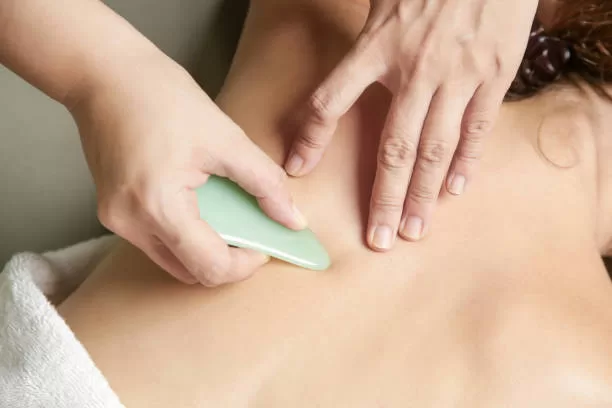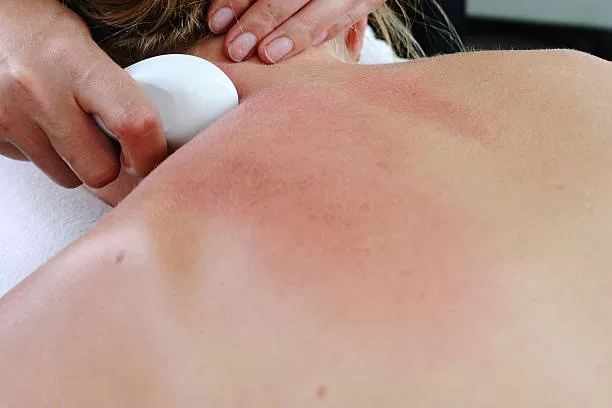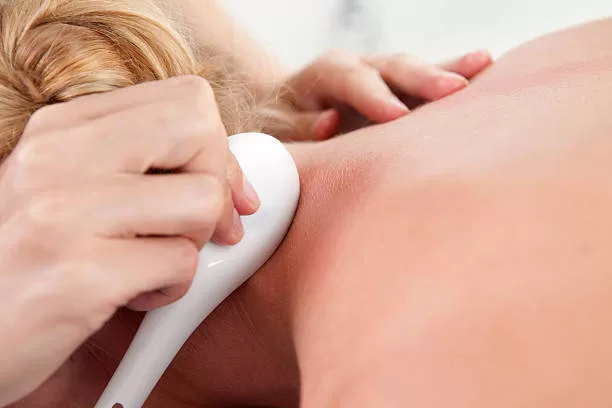What is Gua Sha?
Gua Sha, a form of massage in Traditional Chinese Medicine, is a scraping technique used in both Eastern and Western medicines due to its numerous benefits. In the Chinese-English Medical Dictionary, Gua translates to “scrape” and Sha translates to “reddish, elevated, millet-like skin rashes”. The term Sha is applied to both a syndrome or evil that is retained in the body and its rash-like expression. Gua Sha targets the Sha within the body by using scraping motions done by a smooth edge to raise the Sha to the surface.The strokes will then elicit petechiae that look like a rash on the surface of the skin, evidence that heat and toxins are escaping the body. Guasha is very similar to the graston technique used by other body workers.
How Does it Work?
According to Traditional Chinese Medicine, to have good health, you need to have a good flow of energy, also known as Qi. If the flow of Qi gets blocked in certain areas, it can cause other health issues. Through the scraping technique, Gua Sha can target the areas of the body where the Qi is blocked which alleviates the patient’s health issues. Gua Sha is believed to get Qi “unstuck” and flowing again ensuring the body is properly functioning. The Path of Qi is a Traditional Chinese Medicine concept that explains the way energy moves throughout the body and the inner-outer link of the body. For instance, if you are experiencing deep internal back pain, Gua Sha is able to reach the problem area through targeting the skin directly above the deeper pain to resolve discomfort.
What Are The Benefits?
Gua Sha has been proven to provide pain relief and increase blood flow and circulation. After a Gua Sha treatment, you may experience muscle relief, relaxation of muscles/ relieving tightness, lymphatic drainage, anti-aging effects, and many others. Gua sha is very effective in stimulating the release of stagnation and restoring qi and circulation to the area. By connecting and supporting the connective tissue in the body, Gua Sha can access the cells within the body to then decrease the spread of toxins, infections, and diseases within the body.
Research and Studies
Recent randomized controlled trials (RCTs) provide growing clinical evidence supporting the effectiveness of gua sha for various conditions. In a German RCT involving patients with chronic neck pain, a single gua sha treatment resulted in significantly greater pain reduction, improved range of motion, and better quality of life compared to the control group using heat therapy (Braun et al., 2011). Similarly, studies on chronic low back pain have shown that one or two gua sha sessions can lead to significant pain relief and improved physical function (Yuen et al., 2019). In elderly patients, gua sha was also found to be more effective than hot packs in reducing pain and disability, with trends indicating decreased levels of inflammatory biomarkers such as TNF-α (Yang et al., 2017).
Beyond musculoskeletal issues, RCTs have explored gua sha’s potential in addressing hormonal and neurological conditions. A trial in women with perimenopausal syndrome found that regular gua sha treatments significantly reduced menopausal symptoms and improved quality of life, with favorable effects on hormone levels and mood (Yang et al., 2016). Most recently, a 2024 RCT on Parkinson’s disease reported that 12 sessions of gua sha significantly improved pain, motor function, sleep quality, and mood, along with measurable changes in inflammatory and serotonin biomarkers (Zhang et al., 2024). Across these studies, gua sha was well tolerated, with no serious adverse events reported—highlighting both its therapeutic value and safety when performed by trained practitioners.
What Should I Expect?
During your session, the acupuncturist will begin by placing the smooth-edged tool against the skin. If needed, body oils may be used during this process. Then, they will begin moving up and down the area of treatment with a moderate amount of pressure. This process should not cause pain, even though it may cause discomfort in certain areas. Gua Sha can be performed very lightly, but this may require a longer session due to the increased amount of strokes needed to scrape Sha to the surface. Once the Sha starts to form on the surface, the acupuncturist will continue to follow the markings to ensure that all the Sha is being released at the surface. If there is ever any pain during this procedure, please inform the acupuncturist and the technique will be adjusted accordingly.
Braun, M. et al. (2011). Gua sha treatment for chronic neck pain: a randomized controlled trial. Pain Medicine, PubMed
Yuen, T. et al. (2019). Efficacy of gua sha on chronic low back pain: a randomized controlled trial. Complementary Therapies in Clinical Practice, PubMed
Yang, X. et al. (2017). Effects of gua sha therapy in elderly patients with chronic low back pain: a crossover study. Journal of Traditional Chinese Medical Sciences, PubMed
Yang, X. et al. (2016). Gua sha therapy for perimenopausal syndrome: a randomized clinical trial. Menopause, PubMed
Zhang, L. et al. (2024). The effect of gua sha therapy on pain in Parkinson’s disease: a randomized controlled trial. International Journal of General Medicine, PubMed





